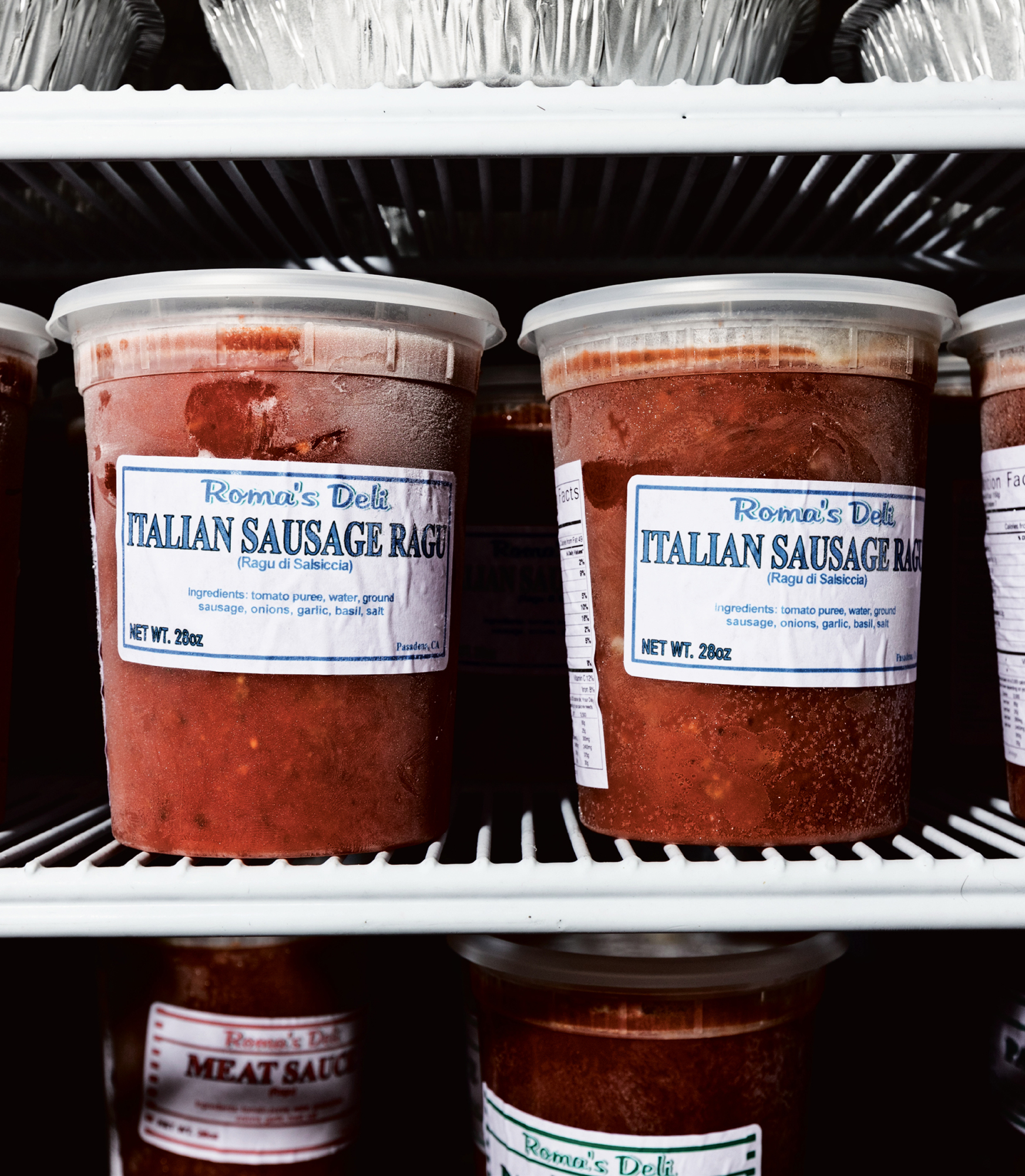

One of the most enjoyable things about contemplating a lasagna strategy is that you can transform almost anything into a tray of the stuff. Leftover Sunday gravy? Tomato sauce and meatballs from your spaghetti dinner the other night? An aromatic lamb, braised in wine? Rotisserie chicken? All can become lasagna with a little bit of shrewd cheese-and-pasta planning. Since the pasta in a lasagna is usually boiled briefly first, then finishes cooking in the oven, picking a sauce is all about finding the right balance of moisture so that your lasagna doesn’t dry out or get too soggy.
CLASSIC & SIMPLE RED SAUCE
A good basic tomato sauce is like that pair of jeans you own that you’ve worn to meetings, to cocktail parties, and to groggily walk your dog at dawn: It’s flexible and reliable, and it pulls everything together. Our recipe on this page works with many of the recipes in this book; the texture and thickness is designed so that a little bit of the moisture will be absorbed into the pasta in the oven, and you’ll be left with a lasagna that’s saucy but not damp.
MEAT SAUCES
In lasagnas made with meat sauces, chunky ragus, and braises, the sauces have the starring roles (think of them as your protein protagonists). Some of our favorites are the Red Wine–Braised Short Rib Lasagna (this page), the Moroccan-Spiced Lamb Lasagna (this page), the Lasagna with Meatballs & Sunday Sauce (this page), and the Classic Bolognese & Béchamel Lasagna (this page).
VEGETABLE PUREES
In addition to adding texture to a sauce or even between the layers, you can also use vegetables as the creamy or saucy element in lasagna. In the Accidentally Vegan Sweet Corn & Scallion Lasagna (this page), we decided to skip the ricotta cheese altogether in favor of a creamy corn puree.
PESTO
When it comes to pesto, there are two important things to keep in mind. First, a little goes a long way with this potent blend of raw garlic and fresh herbs. Secondly, the only moisture comes from the olive oil, so it’s not a particularly wet sauce. This means that if you’re incorporating pesto into a lasagna, it shouldn’t be your only source of moisture. One way to work around this is to stir it into the ricotta cheese (like we show you on this page), or layer it with the cheese (like we do in the Lasagna with Kale Pesto on this page).
